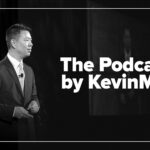I was watching Michigan take on Nebraska the other Saturday when a popular sandwich chain dropped its latest ad: “Our new 500-calorie Fit Sandwich!” Catchy. Marketable. But let’s be honest, it’s mostly bread, a little processed meat, and not much else. Yes, it comes in under 500 calories, but so does half a sleeve of Oreos. Does that make Oreos “fit”? This is the oldest trick in nutrition marketing. We pick a single number (fat grams in the 1990s, calories today) and slap a halo around it. Remember “low-fat” jelly beans? Now we’ve graduated to “fit” sandwiches that are essentially white bread delivery devices.
Here’s the problem:
Calories aren’t quality. A 500-calorie meal of refined carbs spikes glucose and crashes insulin in ways a 500-calorie salad with salmon never will.
Satiety matters. Bread and deli meat burn off fast, leaving you hungrier two hours later. That’s not “fit”; that’s a setup for another snack run.
Marketing ≠ metabolism. The “fit” label is branding. There’s no FDA rule that says “fit” has to mean balanced, nutrient-dense, or heart-protective. It just means “looks good on a billboard.”
What should “fit” mean? To me, it’s the nutritional equivalent of a balanced offense. Some protein to carry the ball, fiber and healthy fats to protect the quarterback, and carbs in the right amount to move the chains. Instead, what the chain is calling “fit” looks more like Nebraska’s second-half defense: full of holes, burned out, and easy to beat. As physicians, we need to remind patients that “fit” isn’t found in an ad slogan or a calorie cutoff. It’s found in food that keeps you full, fuels recovery, and doesn’t send your glucose on a rollercoaster. So the next time you see a sandwich marketed as “fit,” remember: just because it’s under 500 calories doesn’t mean it’s fit for your metabolism.
Larry Kaskel is an internist and “lipidologist in recovery” who has been practicing medicine for more than thirty-five years. He operates a concierge practice in the Chicago area and serves on the teaching faculty at the Northwestern University Feinberg School of Medicine. In addition, he is affiliated with Northwestern Lake Forest Hospital.
Before podcasts entered mainstream culture, Dr. Kaskel hosted Lipid Luminations on ReachMD, where he produced a library of more than four hundred programs featuring leading voices in cardiology, lipidology, and preventive medicine.
He is the author of Dr. Kaskel’s Living in Wellness, Volume One: Let Food Be Thy Medicine, works that combine evidence-based medical practice with accessible strategies for improving healthspan. His current projects focus on reevaluating the cholesterol hypothesis and investigating the infectious origins of atherosclerosis. More information is available at larrykaskel.com.














![Rebuilding the backbone of health care [PODCAST]](https://kevinmd.com/wp-content/uploads/Design-3-190x100.jpg)

![How to fight for your loved one during a medical crisis [PODCAST]](https://kevinmd.com/wp-content/uploads/Design-1-190x100.jpg)
